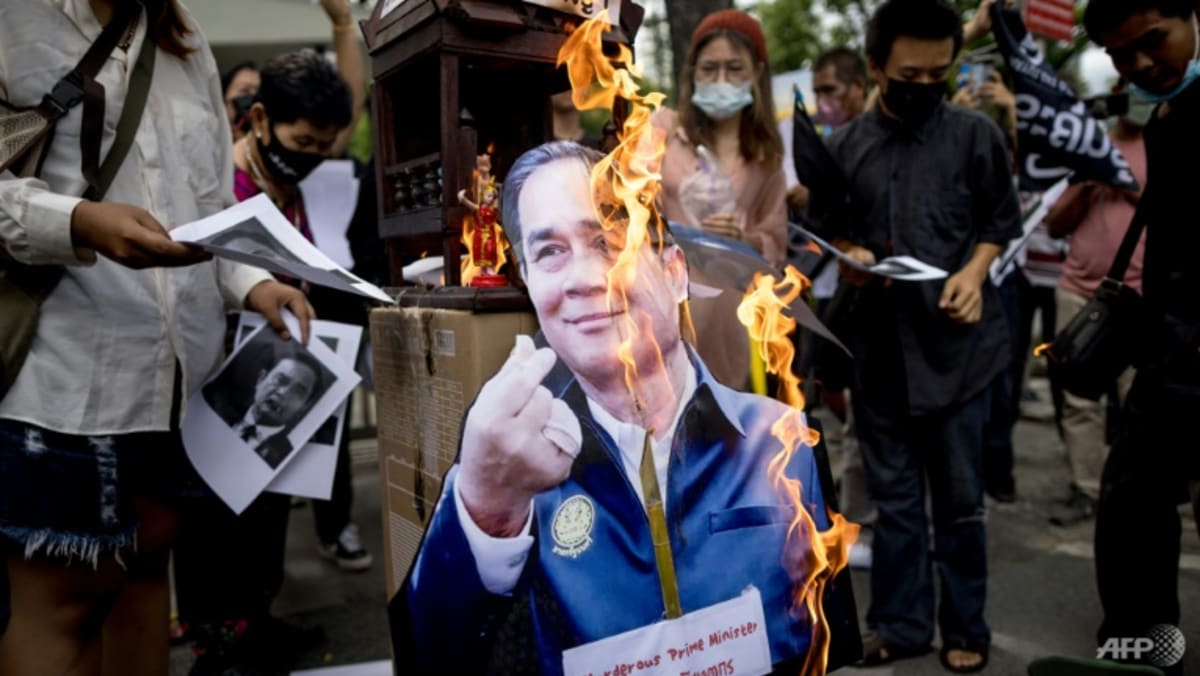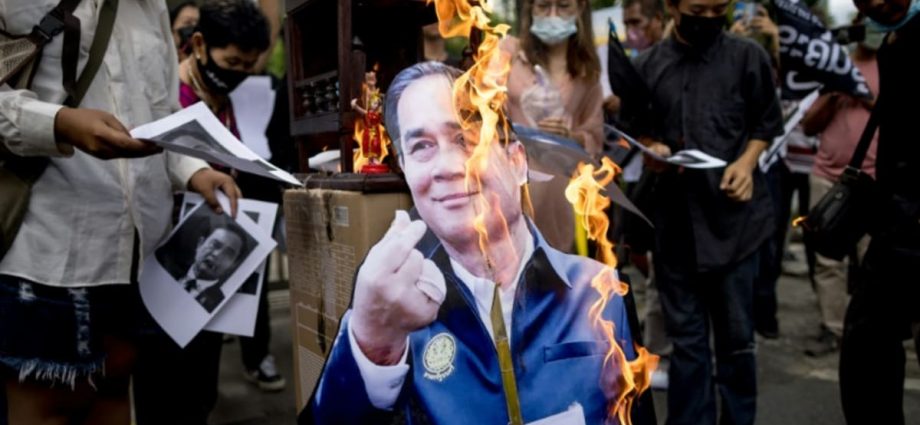
2017: NEW MILITARY-DRAFTED CONSTITUTION
Thailand’s current constitution was implemented in 2017, having been drafted by the military.
Significantly, it bars the prime minister from serving more than eight years in total. The interpretation of this rule has been the subject of much debate and has led to the current situation Prayut faces.
The new constitution also included changes to the voting system that would be implemented in 2019.
One change included was the removal for the requirement that the prime minister be selected from among the elected members of the House of Representatives.
2019: APPOINTED PRIME MINISTER AFTER POLLS
Prayut was elected prime minister after national polls in 2019, running as an independent candidate.
While they did not capture the most seats, the Palang Pracharath party, which had ties to the NCPO, received the most votes.
Prayut was nominated by the party as its candidate for prime minister.
The Election Commission came under criticism after the announcement of the election results saw multiple delays.
While unofficial results were announced four days after the election on Mar 28, 2019, official results were announced in May.
After the election, Prayut was voted in as prime minister when the National Assembly convened. The National Assembly has 750 members – comprising 500 members of parliament elected through a general election and 250 members of the Senate appointed by the military.
Prayut won with an overwhelming 500 votes to 244, 249 of which came from the Senate.
Opposition parties have said that the election was held under rules designed to keep him in power.

